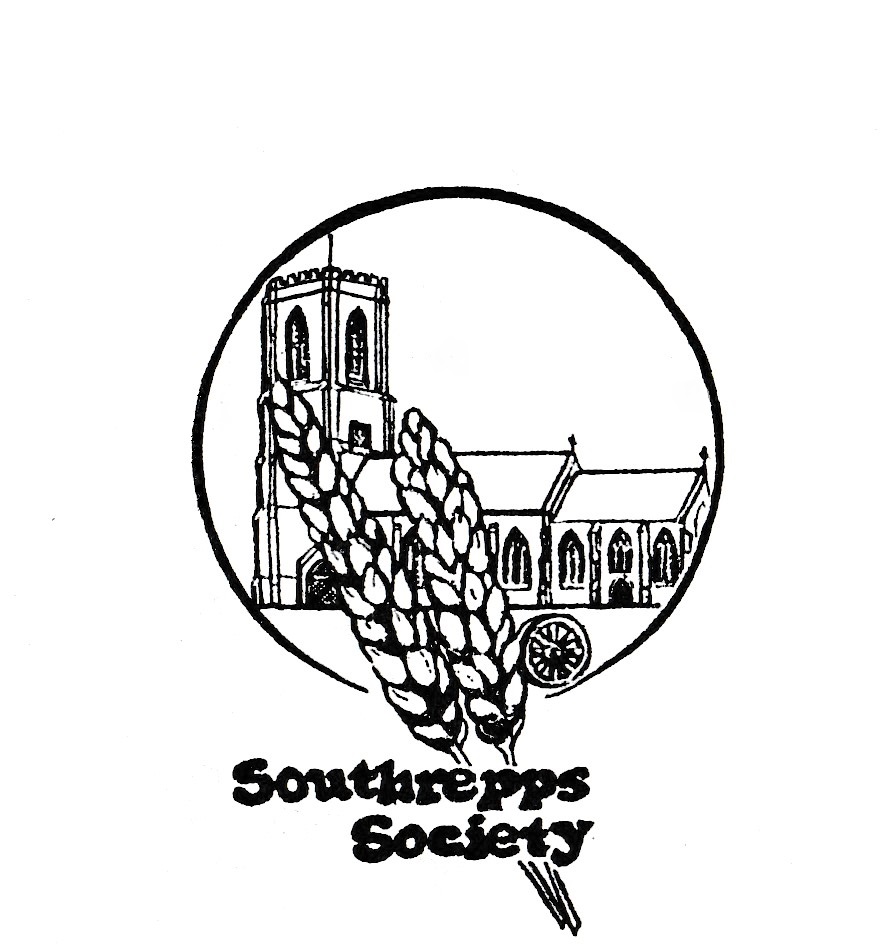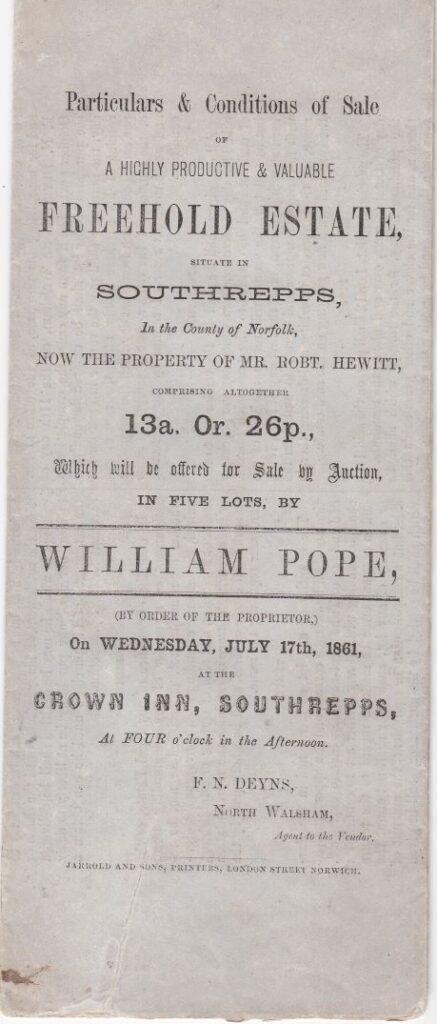Author Margaret Dowland
Table of Contents
Crown
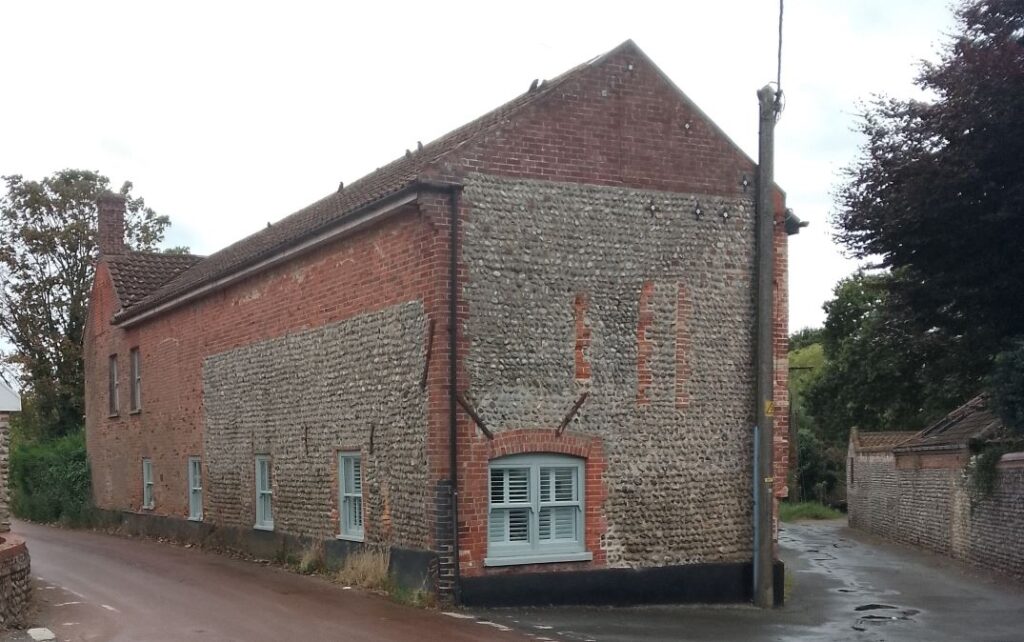
The Crown was on the opposite side of the cross roads from the Vernon Arms at the top of Crown Loke. It was possibly operating from at least 1783 when there are records of an auction being held there. The first recorded licensee was John Summers, although the premises were owned by William Hardy.
This is a list of the licensees, not necessarily the owner (from the Norfolk Pubs Site https://www.norfolkpubs.co.uk/norfolks/southrepps/srepind.htm). The Crown as with all the pubs in Southrepps was owned by the Gunton Estate.
| JOHN SUMMERS | 1789-1794 |
| ROBERT FOULGER | 1794-1795 |
| ESTHER FOULGER | 1795-1796 |
| ROBERT SUMMERS | 1796-1804 |
| SPURRELL PLUMBLY | 1836-1843 |
| WILLIAM WARD | 1843-1846 |
| JOHN BOND | 1846 |
| WILLIAM BLOGG | 1848-1856 |
| WILLIAM PERKINS | 1858-1865 |
| JOHN COPSEY | 1866 |
| SAMUEL BATES | 1867 |
| EDWARD CHAPMAN | 1868 – 1871 |
| JAMES SWANN BURRELL | 1872-1881 |
| THOMAS EDWARD BIRD | 07.11.1881 |
| GEORGE BROWN | 05.05.1884 |
| WILLIAM DOBSON | 25.07. 1887 to closure in 1903 |
It would appear that Edward Chapman in 1868 was the first licensee recorded to operate as butcher from the premises. The establishment was not always law abiding. On the 7th of June 1886 George Brown the licensee was fined 10 shillings with 14 shillings 6 pence costs for having the house open at illegal hours on Sunday 30th May. Not only was he fined but the two customers William Self and John Bane were also fined 6 pence with 7 shillings costs and 12 shillings 6 pence with costs respectively.
Auctions were often held in the function room – a large open plan room on the first floor.
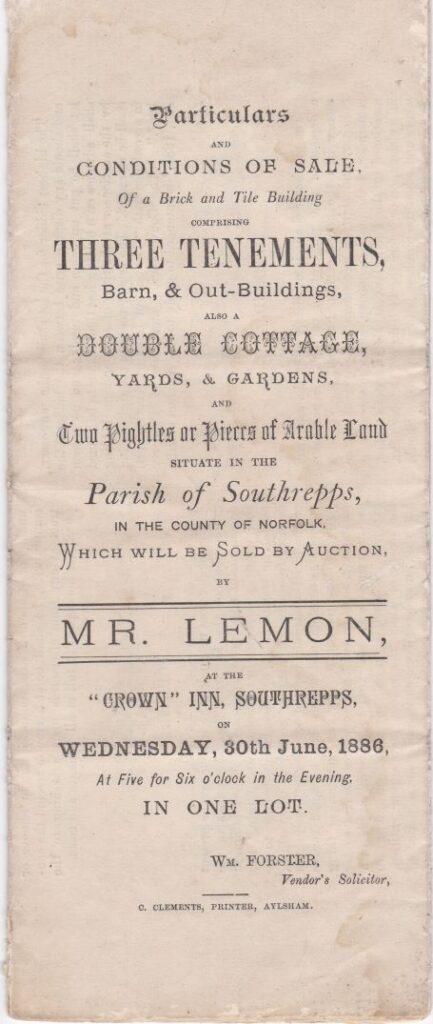
Thomas Bird became tenant premises in the 1880s and is recorded as both licensed victualler and butcher. He continued to run the butchers long after the pub closed. The now derelict buildings alongside the Loke were used as an abattoir and then they were used as workshops and store for Ted Bird’s car repair business.
There was also a bowling green at the east end of the property, which was used until WWII. It now operates from a club house at the back of the recreation ground.
New Inn
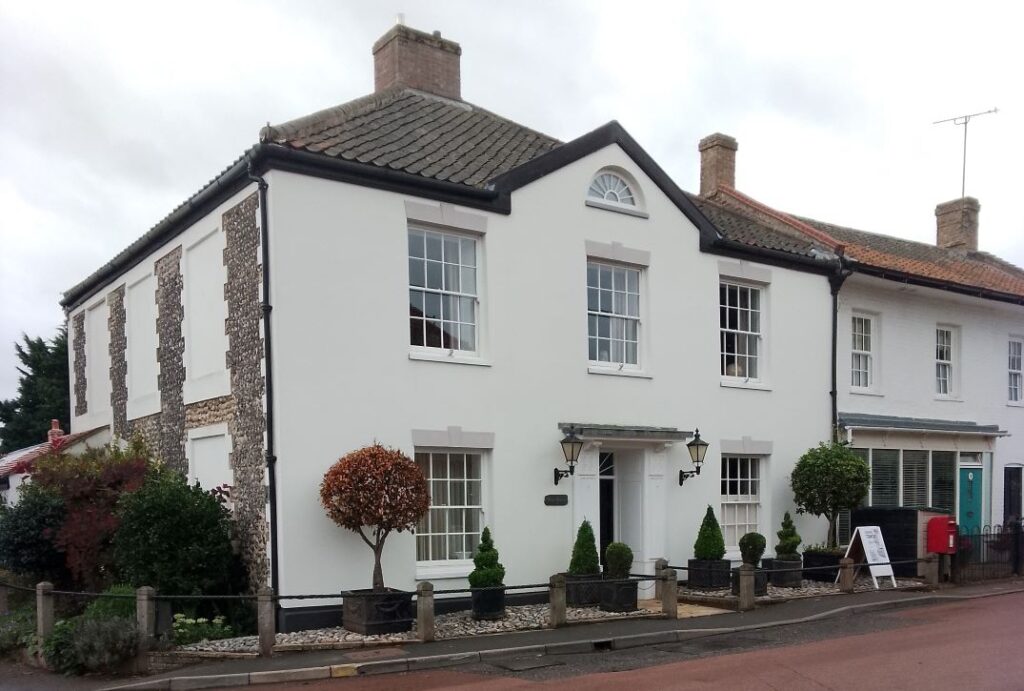
The New Inn was a coaching Inn. The earliest record for it is 1783, when an auction of property was held there. We do however have a photocopy of a document from 1895 which shows the owners of the estate as Mr John Rice and his wife; they sold the land to Robert Clarke in 1684. There is a John Rice buried at the Church in 1791. The deeds now lost showed that a scarlet dyer and then a wool comber worked there possibly before it became an Inn. James Sharpen did own the Inn, as well as being a veterinary surgeon in 1863, but sold it the same year. In 1875 it was sold to Phillip Smyth Primrose of Trunch Brewery. In 1895 it was sold to Morgans and then to Steward and Patteson – both breweries.
It is now a grade II listed building having been listed in February 1952 as New Inn. The list was changed in 1988 to Ham House.
This is the citation
House, previously a public house. Early C19. Brick and flint, part rendered. Pyramidal hipped smut pantile roof. Painted brick front of 3 bays, 2 storeys. Central door with reeded pilasters and fascia. 6 panel door; over- light with single vertical glazing bar. Sash windows with glazing bars under rendered flat arches with keystones. Pediment over central bay with lunette having radiating glazing bars. Central stack. Left hand gable wall of galleted flint; 4 blind openings with rendered reveals.
The licensees as from The Norfolk Pubs website:
| JAMES LEAKE SHARPEN | 1850 – 1863 |
| JOSEPH CUSHION | 1864 |
| JAMES LARNER | 1865 |
| JAMES BAKER | 1867 to 1880 |
| ANN BAKER | 03.01.1881 |
| CHARLES SOLOMON HICKS | 04.11.1889 |
| HENRY JAMES JORDAN | 05.06.1893 |
| CHARLES TURNER | 22.07.1901 |
| AMELIA TURNER | 29.06.1908 |
| WILLIAM COLLINS | 15.10.1934 |
| ERNEST FREDERICK JORDAN | 22.10.1941 |
| LILY GRACE JORDAN | 21.09.1942 |
| MARTIN CHARLES WARBOYS | 01.11.1943 |
| THOMAS FREDERICK RUMSEY | 21.05.1951 |
| GEORGE WILLIAM EARL | 25.08.1952 |
| ERNEST TARPY | 11.01.1954 |
| GEORGE WILGRESS | 17.05.1954 |
| REGINALD NORMAN FEEK | 02.06.1966 closed 1966 |
To the rear of the Inn, in a walled yard, was stabling as well as the long room (now converted into a dwelling) that served as a club and function room for the village and Inn.
James Baker did not always keep an orderly house, being fined £2 with 12 shillings costs for permitting drunkenness in his house on the 15th of June 1872 and otherwise keeping a disorderly house. His licence was only renewed with a caution.
It has been said that when wealthy travellers stayed at the Inn their attendant workers would have to stay at the Crown!
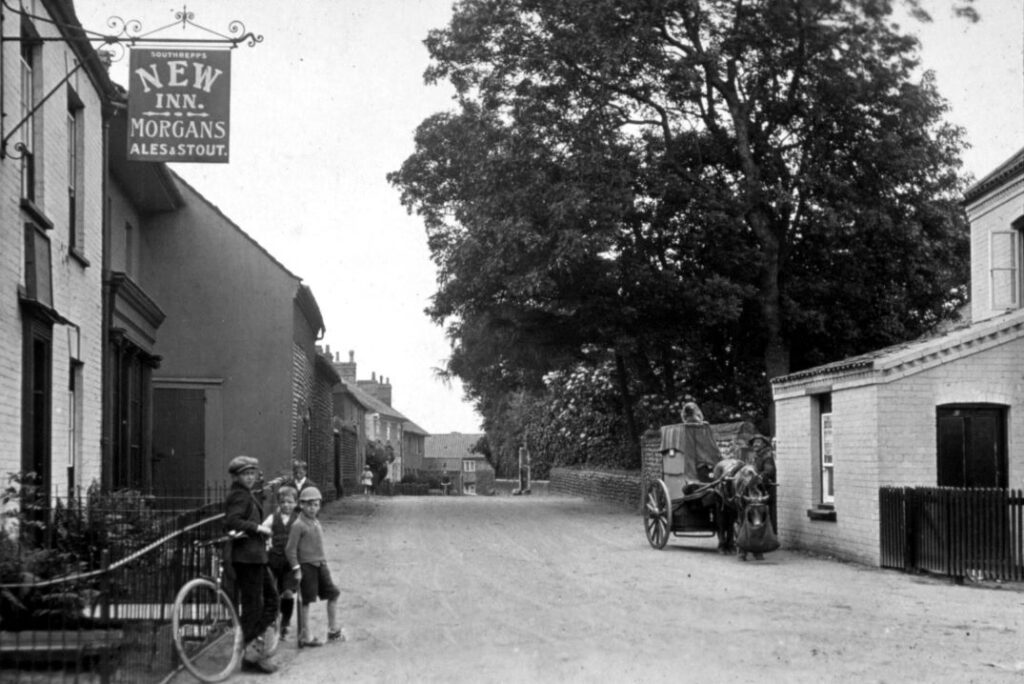
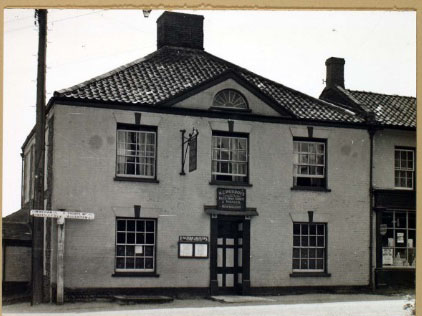
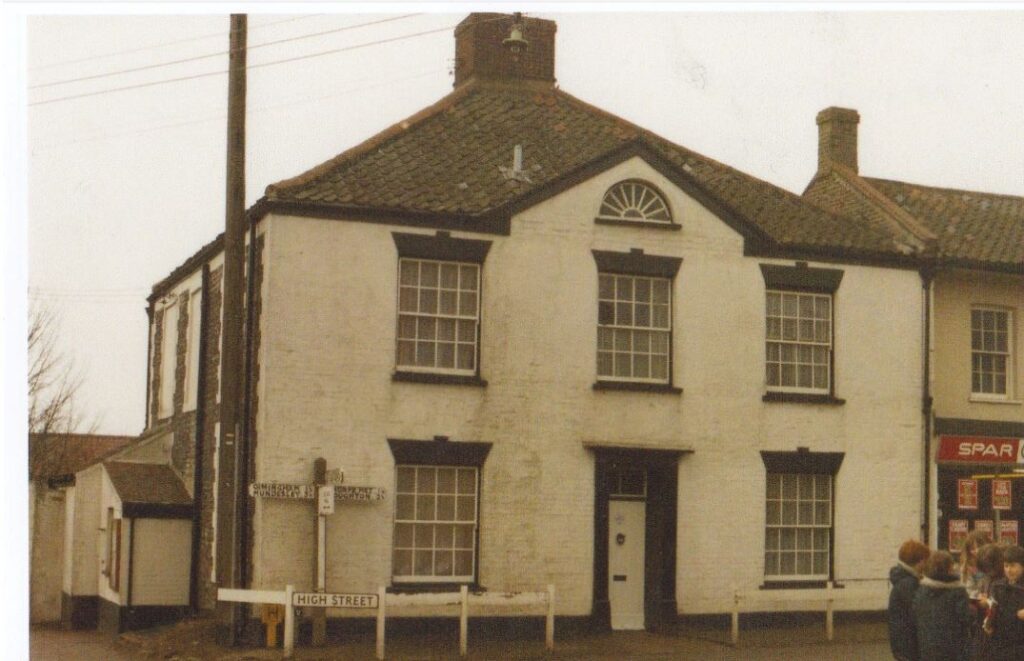
The Inn closed in 1966 and it was bought from Mrs Lodge by Alan and Mary Young in 1969.
The New Inn had an important role in the village. The postmen would have their breaks in a room in the Inn. The women of the village would come to the long room to use a mangle to dry the washing. After Audrey Veness died the doctor’s surgery was moved from Post cottage to New Inn until the Youngs found the weekly upheaval too taxing, when it then transferred to the village hall.
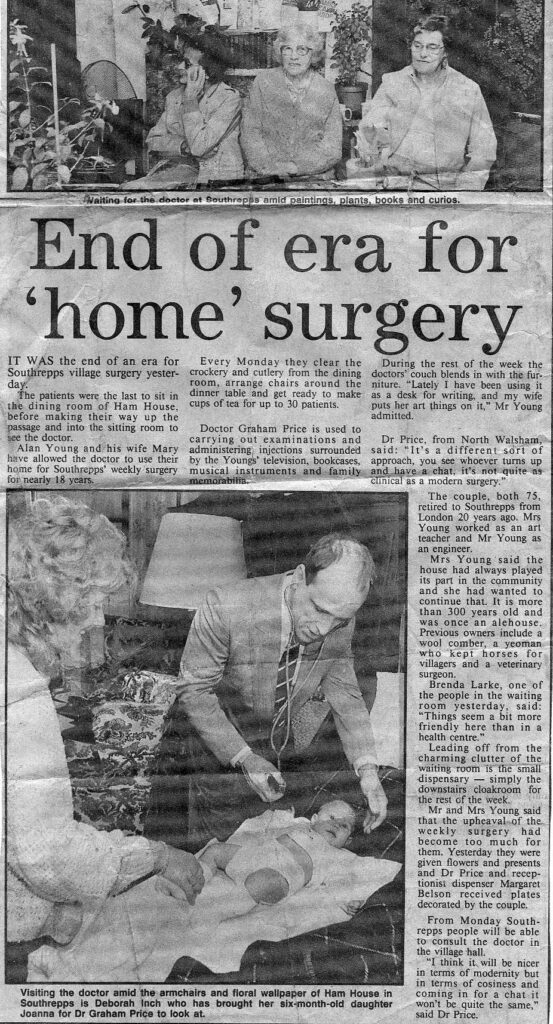
Red Lion
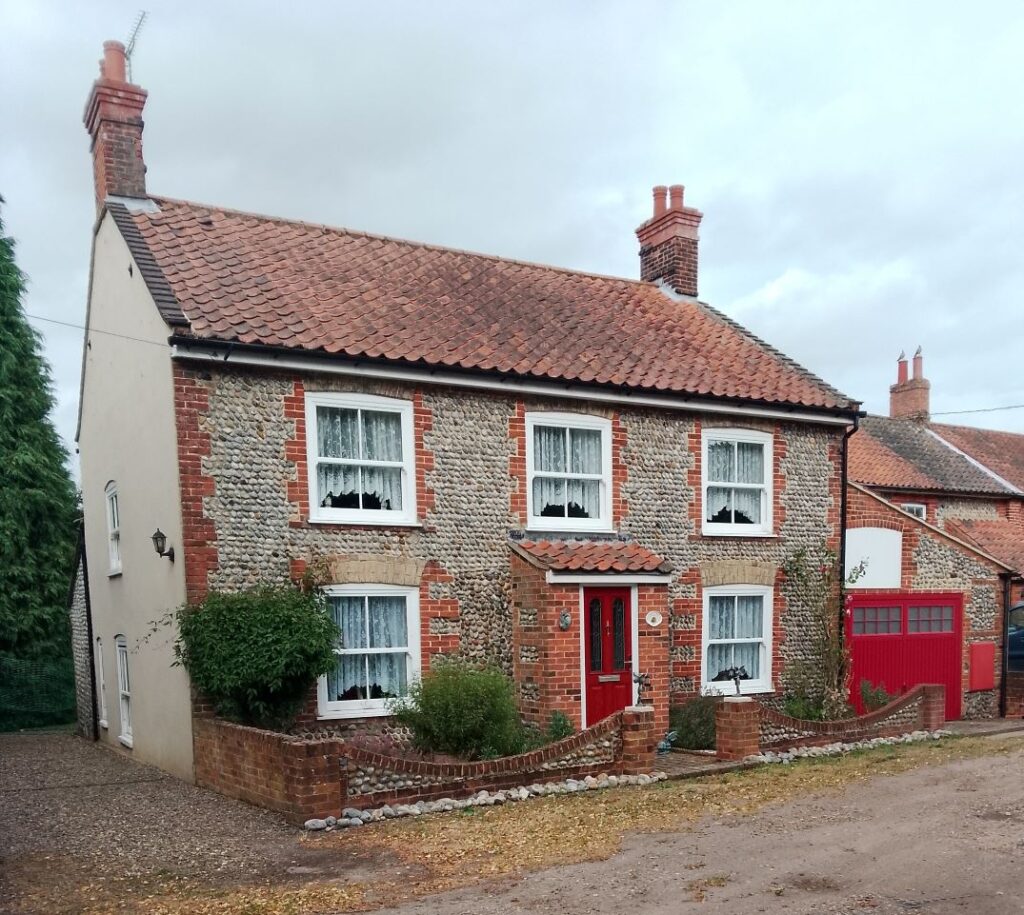
The Red Lion was on Bradfield Road in Lower Street.The first record for it is in 1852. It too, like the Vernon Arms, was owned by Lord Suffield. It did not operate for long – just 25 years. When it closed the house was bought by William Temple, a coal merchant.
The licensees from The Norfolk Pubs website
| Robert Mower. | 1852-1856 |
| Henry John Vine | 1861 |
| John Cooper | 1864 |
| William Deery | 1867-1873 |
| John Turner | 1873-1877 |
William Deery on the 7th June 1873 was sentenced to six weeks’ imprisonment, without option of a fine, for assaulting his wife on Monday 16th September 1873 – Licence renewal refused.
Pig and Whistle
In 1881 census listed Mrs Sarah Golden as victualler of the Pig and Whistle.
Sarah’s Husband John Thomas Golden of the Cross keys in North Walsham had applied for a licence in 1879 to sell beer in premises which at the time of the application were two dwellings lived in by James Brackenbury and John Watton. The house would be converted into a single property and used as a shop. He died before the licence was granted, Sarah was granted an ‘Outdoor licence’ only. In 1883 she applied for an licence to sell On the premises, despite Sarah needing the extra money to support her seven children this request was refused as the village already had three public houses. Her case was not helped by earlier complaints.
Thursday 26th August 1880 – Having admitted to allowing beer to be consumed on the highway, near her house, (On 24th August) Mrs. Golden promised not to offend again and asked for leniency. Fine of 1s and 9s 6d costs as against the maximum of £10 that could of been imposed.
Tuesday 17th April 1883 – Fine of £1 and 13s costs plus licence endorsed for allowing beer to be consumed on the premises, in contravention of her licence. A second offence.
Police Superintendent opposed licence renewal Monday 27th August 1883. Mrs. Golden had twice been summoned for offences against the Licensing Act and a further charge was “hanging over her head”. There had been complaints from the public about the way she conducted the beer house.
In 1883 Mrs Amies and Emanuel Dunkin are also listed as beer retailers. Before that Mrs Christianna Harmer is listed as a farmer and beer retailer but again no location is given.
Beer houses were created by the 1830 beer house act which allowed premises to sell beer only. Beer houses had to shut by 10pm. Beer houses were abolished in 1980.
The location of any of these beer houses is unknown.
Vernon Arms
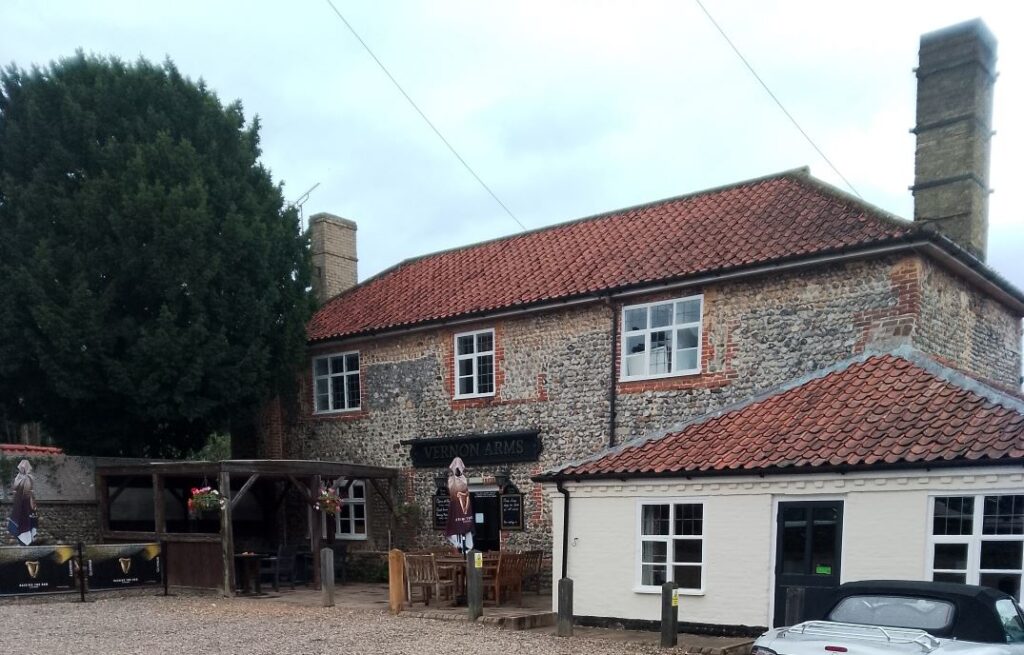
It is thought that the Vernon Arms was originally a farmhouse built in the 1500s . It was then converted into three cottages in the 1600s becoming a public house in the 1800s.

The earliest record is a newspaper cutting of an auction to be held there in 1836 with the house being that of Robert Mower the first recorded licensee of the pub.
It is now a grade II listed building having been listed in February 1952; this is its citation.
Public house. C19 with earlier core. Flint with brick dressings. Hipped
pantile roof. Rectangular in plan with C19 single storey extension to right
hand side and C20 extension to rear. Facade of 3 bays, 2 storeys. Flint
plinth with brick cap. Central doorway with brick reveals. To left one
3-light C20 casement under segmental arch; to right one probably C18 leaded
2-light casement. Blocked openings to either side of door. To upper floor
a central cross-casement, flanked by 3-light casements, all with some leading.
Brick and flint buttress to left hand end of front wall. Gault brick stack
to right hand gable wall.
The Vernon Arms was owned by Lord Suffield and the Arms are those of his first wife Georgina Venables-Vernon who he married in 1809 but who sadly died in 1824, which would suggest that the pub started between those dates. He was also Lord of the Manor. The pub was the venue for the Southrepps Manorial Court in the 19th Century. The upper floor was also a function room used by Friendly Societies and others.
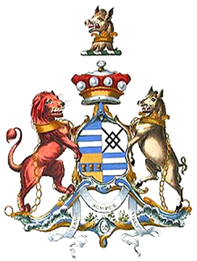
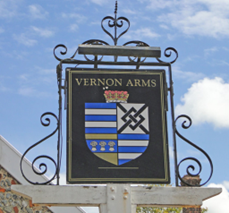
The licensees as from The Norfolk Pubs website.
| Robert Mower | 1841-1851 |
| William Ward | 1851-1854 |
| Ellis Rogers | 1861-1885 |
| Susan Rogers | 1885 |
| George Ellis Rogers | 1889 |
| James Cook | 1893 |
| Walter Cook | 1902 |
| Eliza Cook | 1907 |
| John William Royall | 1909 |
| John and Edith Harvey | 1912-1932 |
| Martin Warboys | 1932 |
| Benjamin Baxter | 1934 |
| Reginald Feek | 1958 |
| Raymond Tuthill | 1958 until at least 1982 |
| — | |
| Susan Coleman | 1997-2001 |
| Paul and Carolyn Mitchel | 2002-2005 |
| Paul and Debbie Briggs | 2005- |
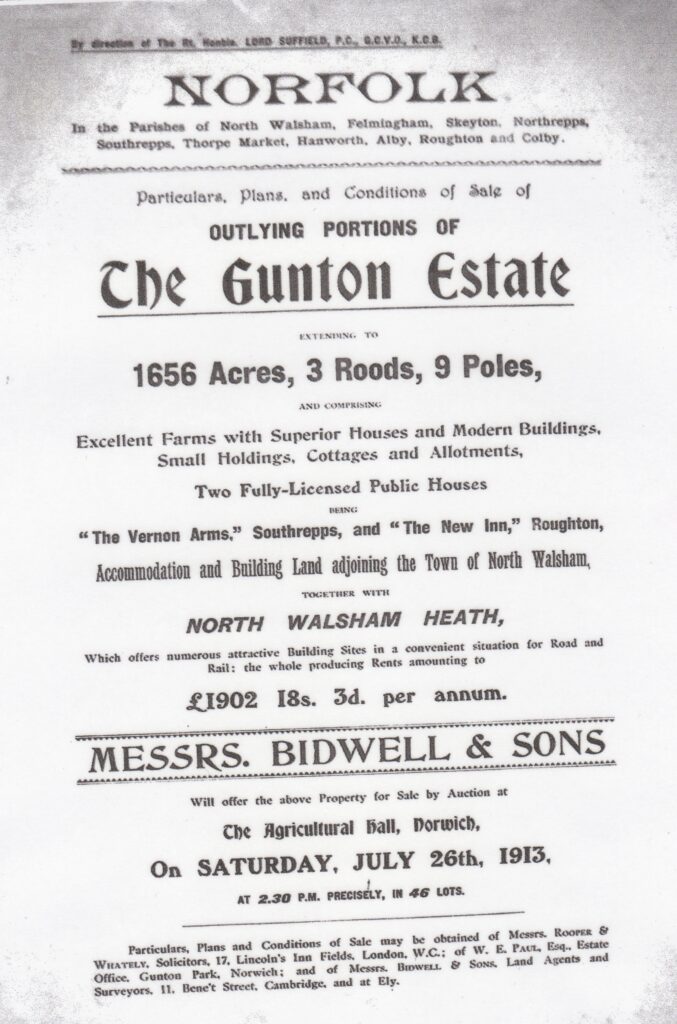
The pub and other parts of the estate were sold by Lord Suffield in 1913. The brewers Steward and Patterson bought it in 1920. It has been owned by various breweries, the last being Punch Taverns. It is now a Free House owned by Paul and Debbie Briggs.
Over the years the Vernon has played an important role in the life of the village.In the 1950s/6- Lennie Bennet kept a chair in one of the sheds from which he operated his Barber shop.
Its wall was a common meeting place, particularly for the young men of the village.
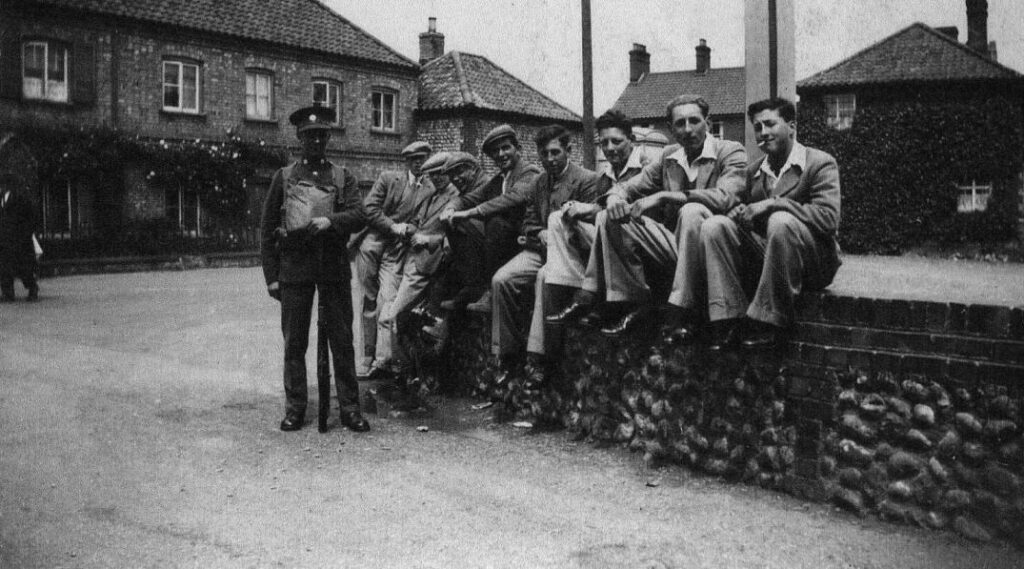
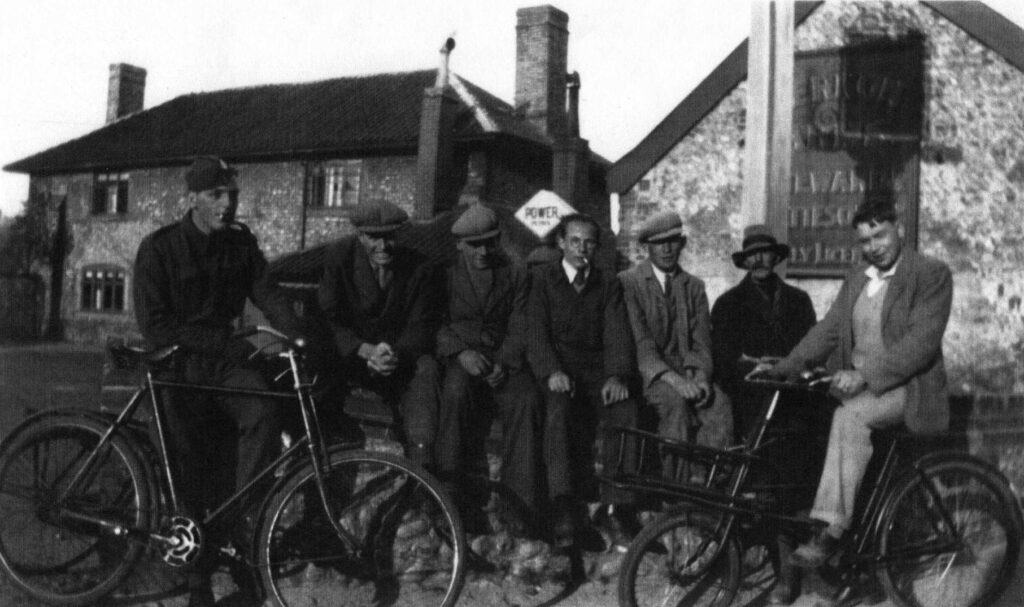
Just visible behind their heads is the petrol pump, as petrol could be bought here as well as at the forge.
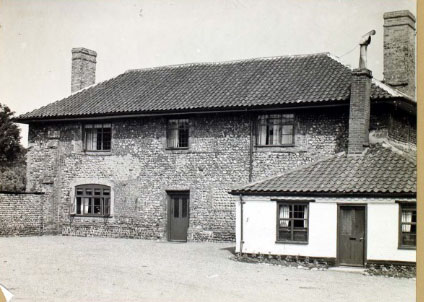
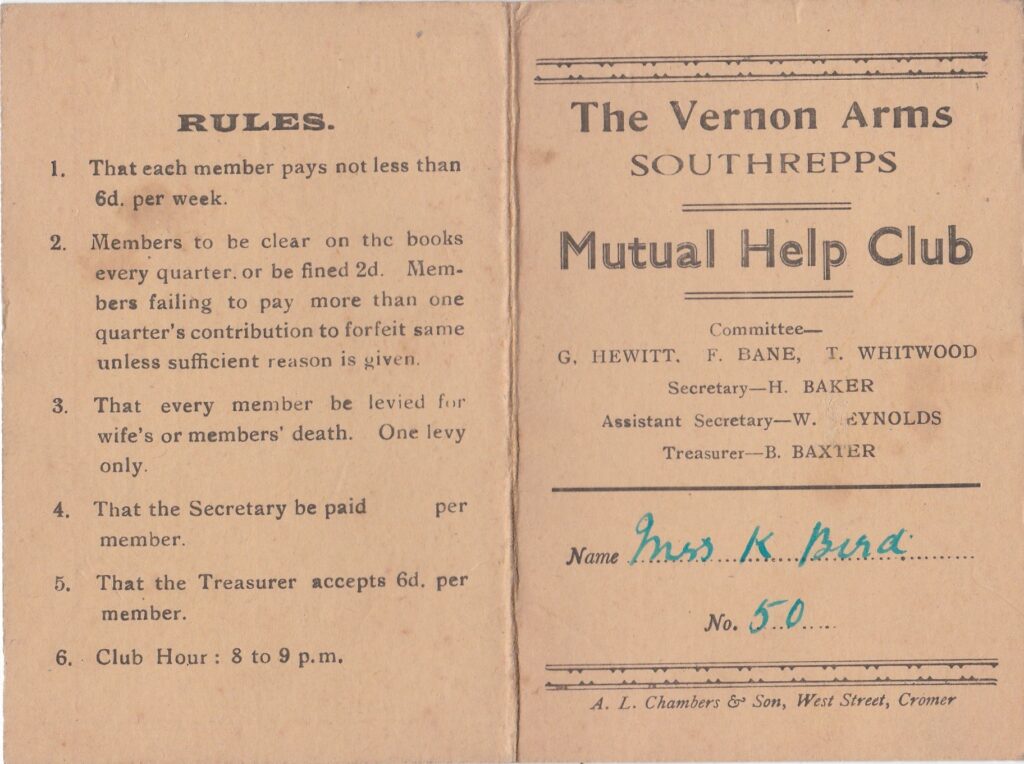
During the war it ran a Mutual Help Club with members paying one shilling a week.
When Ben Baxter was the publican from 1934 the pub became a hub for local folk music, more often than not led by Ben and his brother Harry, who played the fiddle. They were recorded by the BBC in 1955 at the age of 83. Click this link for an article about that session and to hear them play and sing https://www.mustrad.org.uk/sound/sorepp08.mp3. Harry also played for the Step dancing that took place in the pub, a traditional Norfolk folk dance.
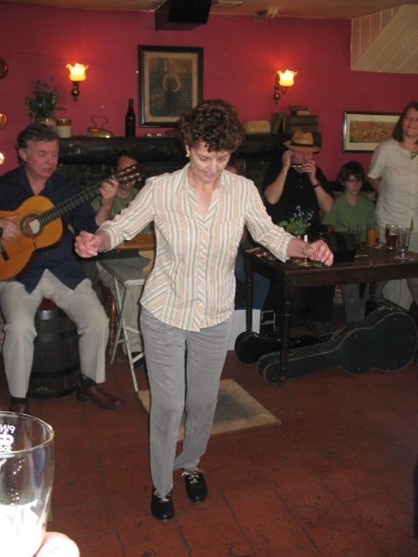
The pub was widely known as a place for music and dance for the next ten years. Rig-a-Jig-Jig, a group keeping the old traditions alive spent an evening Step dancing in the pub in 2008.
The back dining room which opens onto the garden was added in the 1990s.
The car-park used to have a phone box. Does anyone recall when it was removed?
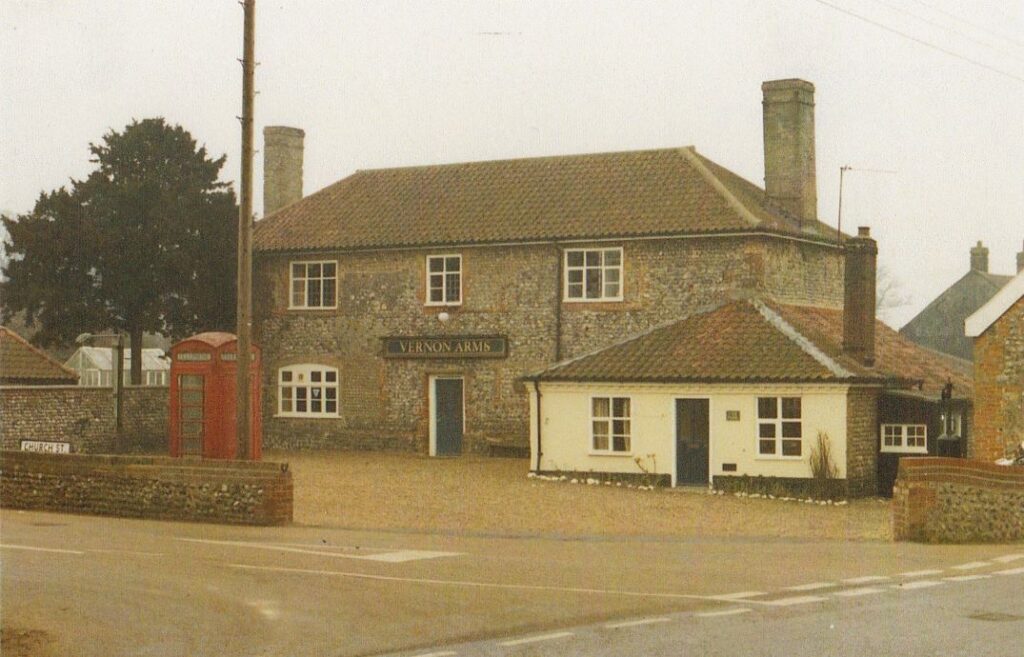
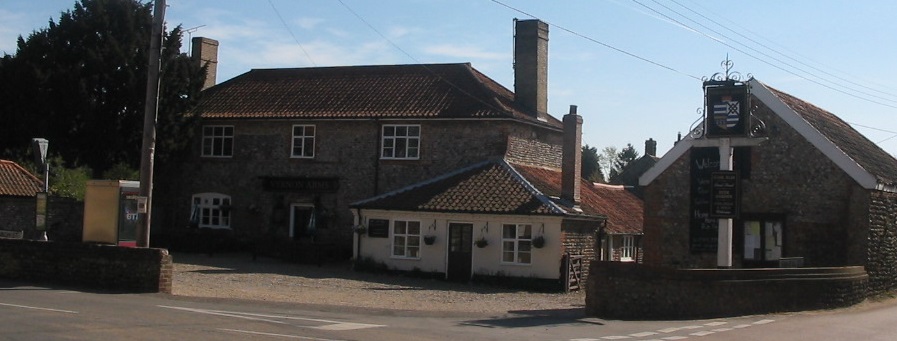
The House was awarded Asset of the Community Value Status in 2013.
That year the pub was extended to add a new cellar(It does have a cellar below the bar but this has not been used in over 20 years), dining room and new toilets. The garden was reduced to increase the size of the car-park.
During the 2020 Covid epidemic lock-downs the pub sold meals to the village as home delivery with Paul driving round the village delivering delicious plates of hot food. In the second lock-down it was fish and chip Friday.
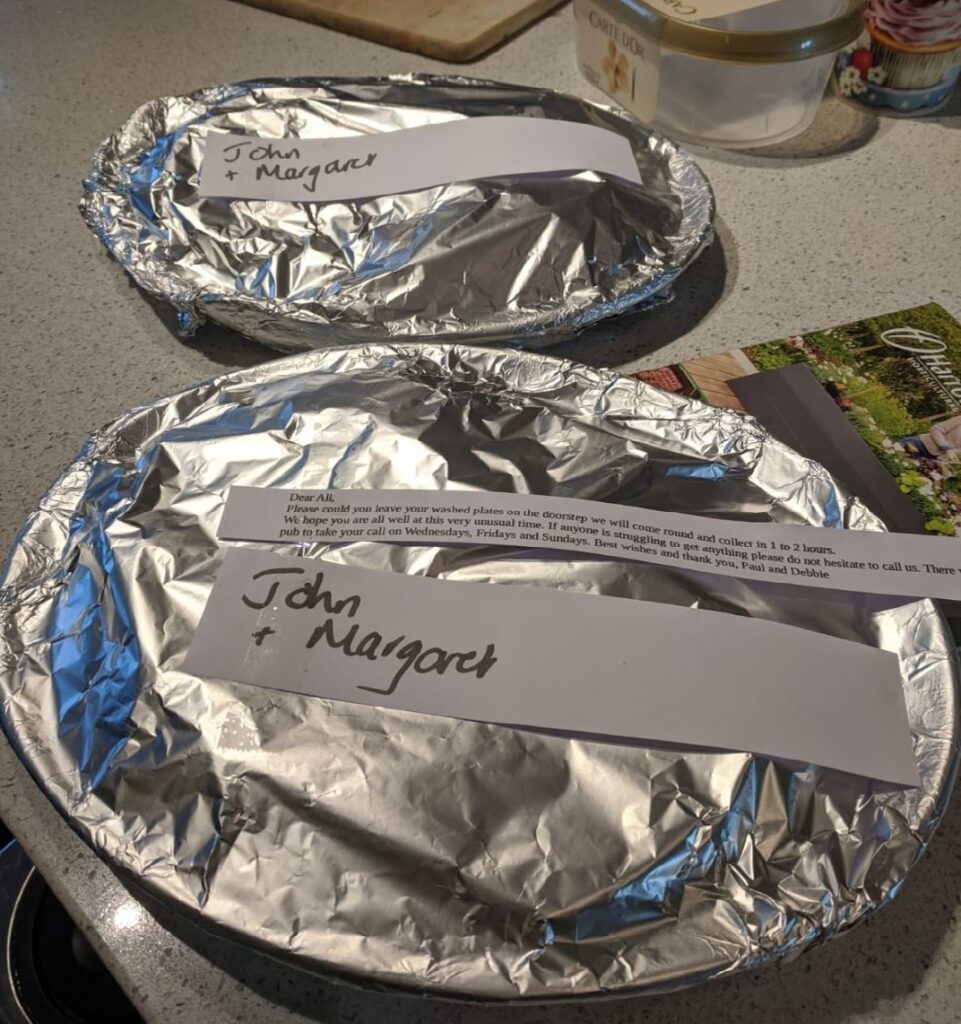
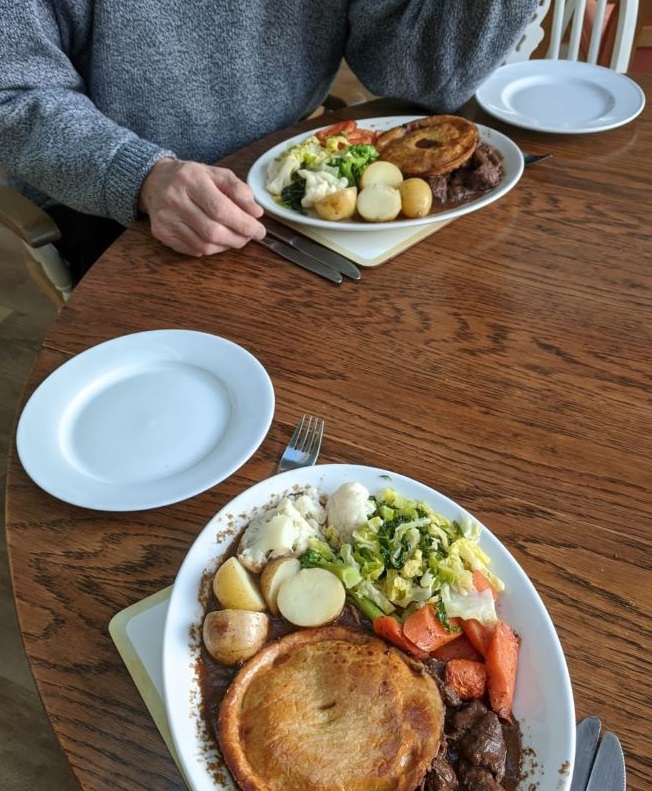
Accompanied by this wonderful note
Dear All,
Please could you leave your washed plates on the doorstep, we will come round in 1 to 2 hours. We hope you are all well at this unusual time. If anyone is struggling to get anything please do not hesitate to call us. There will be someone at the pub to take your call Wednesdays, Fridays and Sundays. Best wishes and thank you. Paul and Debbie.
The Pub continues to be the hub of the village helping to cater for its needs, not least opening early on Wednesday and Friday mornings for the Pilates ladies (and Kevin) for coffee. They also sponsor activities in the village, such as the horticultural show. They are also a crucial part of the classical music festival.
Reginald Feek was licensee in both the New Inn and the Vernon Arms; he also worked at the Suffield Arms. Martin Warboys worked in the Vernon Arms first before moving to the New Inn.
Robert Mower seems more complicated: there is a Robert Mower in both the Vernon Arms and the Red Lion. Ancestry is unhelpful except to say that a Robert Mower of Southrepps had a father John who was also a victualler, but the census doesn’t say where.
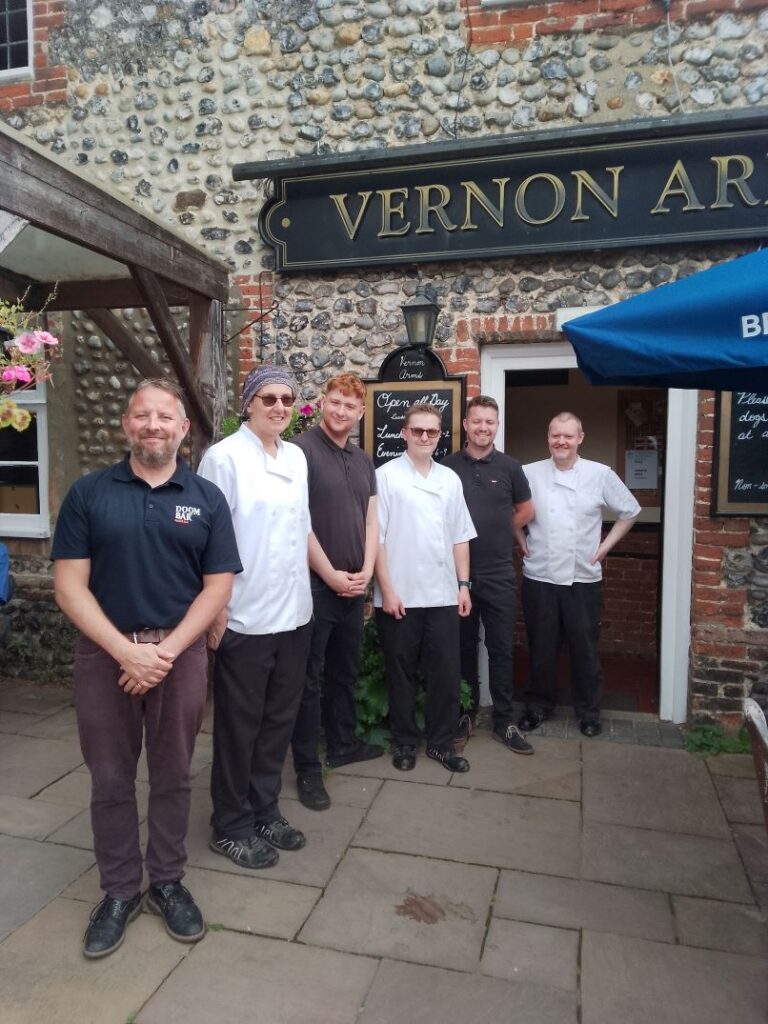
(Dowland)
If you have any memories of the pubs that you would like to be included please use the contact us at the bottom of the page.
